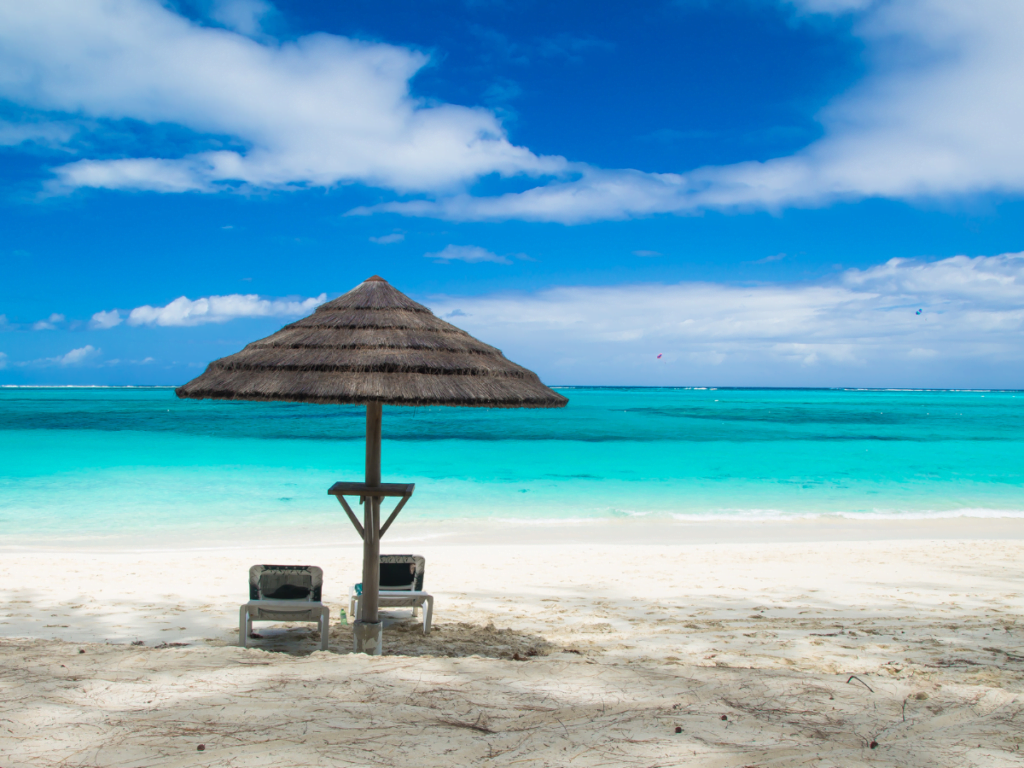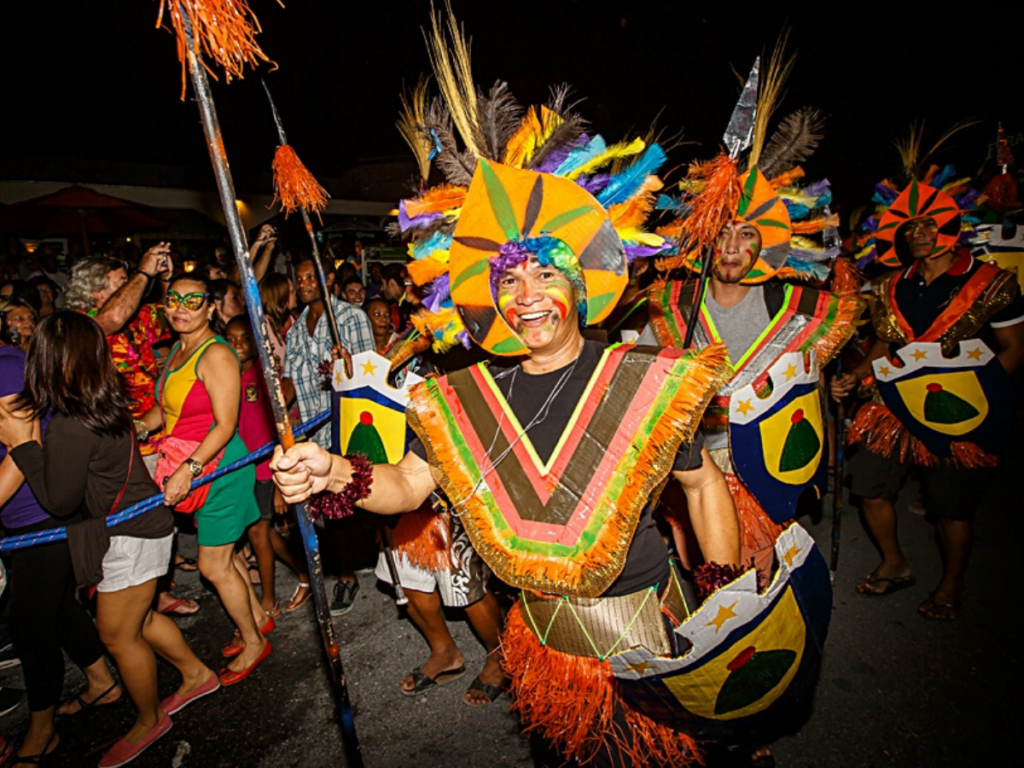The Best Time To Visit Turks And Caicos Islands: An Ultimate Guide
-
Written by: Ricardo De Sousa
- Published:

The Turks & Caicos is a tropical gem, located south of the Bahamas in the Caribbean. This archipelago is well known for its exquisite beaches, such as Grace Bay Beach, which regularly features in Trip Advisor’s Best of the Best Beaches Travelers Choice Awards.
The islands are also a top destination for diving and snorkeling. Boasting one of the largest barrier reefs in the world, it is home to hundreds of miles of vibrant coral reefs teeming with diverse marine life. Here, you can encounter reef sharks, parrotfish, eagle rays, turtles, and, if you’re lucky, even hammerhead and bull sharks.
With so many activities and natural beauty to enjoy, when is the best time to visit Turks and Caicos? Well, it depends on your budget and travel preferences. The Turks and Caicos has three tourist seasons:
High Season: December – March
Shoulder Season: April – May
Low Season: June – November
During the high season, you can expect lively festivals and perfect weather, while the low season offers a budget-friendly vacation and quiet beaches. This guide will help you find the perfect time to experience everything these stunning islands have to offer.

Weather in Turks and Caicos
The Turks & Caicos islands experience warm temperatures all year round ranging from 73°F to 84°F (24°C to 29°C). The “cool season” is in the winter and spring months from December to April, and is the most popular time to visit the Turks and Caicos. Mild temperatures, complemented by minimal rainfall set the scene for perfect vacation conditions.
For those seeking warmer temperatures, you may be tempted to visit during the hotter months from June to November. Where temperatures range between 79°F to 84°F (26°C to 29°C) and can reach highs of up to 95°F (35°C). But, this is typically the rainy season and the possibility of hurricanes and tropical storms is much more prominent, due to the warmer temperatures and favorable atmospheric conditions.


Hurricanes and Rainy Season
The rainy season begins in June and lasts until late November. September is the peak of the rainy season experiencing an average of 136 mm of rainfall. Thus, it’s no surprise that September is also the least popular month for holidaymakers.
The humid conditions and hotter weather also mean that mosquitoes are more prominent during this time. So be sure to pack mosquito repellent or mosquito spray if you travel during this period.
Hurricanes are rare in Turks and Caicos occurring only 3 times per year on average. The latest hurricane made landfall on August 17, 2023, reaching speeds of up to 111 km/h. Thus, if you do plan on traveling to Turks and Caicos over the rainy season we recommend signing up for travel insurance. Extreme weather can cause unexpected delays or cancellations in flights, cruises, and itineraries. So it is wise to be covered for any possible loss or extra costs due to trip cancellations or interruptions.
Below, we have listed some recommended travel insurance companies that provide policies covering trip cancellations or interruptions caused by hurricanes and severe weather.
You can also compare and purchase travel insurance plans online at travelsinsurance.com.
Monthly Breakdown
Turks and Caicos in January
Weather: Turks and Caicos weather in January is mild and pleasant. Temperatures fluctuate by a few degrees around 77°F (23°C). The chance of rain is minimal during this time. But, you want to pack one of two thin extra layers for the evenings. Since the cool temperatures and strong breeze may be chilly.
Major Events & Activities: The Junkanoo New Year’s Day Festival is a joyous and unmissable event to kick off the new year. With lively parades, street dancing, traditional music, and vibrant costumes. This festival offers a wonderful opportunity to immerse yourself in the rich culture and traditions of the Bahamian islands.
Pros:
Excellent weather – ideal for watersports.
Low chance of rain.
Less busy compared to the Christmas and Easter holiday periods.
Cons:
High peak season prices.

Turks and Caicos in February
Weather: February is the driest month of the year. So if you don’t want any rain to spoil your trip, then February is the best time to visit Turks and Caicos. Expect mild temperatures between 74°F to 77°F (23°C to 25°C). Wind speeds are also ideal for water sports such as kiteboarding and windsurfing.
Major Events & Activities: February is the best month for watersports like kiteboarding and windsurfing due to the strong wind speeds. If you’re new to these sports, don’t worry. Turks and Caicos Kiteboarding is one of the top-rated schools in the region, offering comprehensive 3-hour private lessons tailored for complete beginners.
February also features one of the most popular cultural festivals of the year – the Valentine’s Day Cup. Held in Middle Caicos, competitors craft traditional model sailing boats by hand and race against each other along Bambarra Beach. Boat building and sailing form a large part of the Turks and Caicos heritage. Making this event a celebration of the island’s rich maritime history.
Pros:
Excellent weather conditions.
Almost zero chance of rain.
Less busy compared to the Christmas and Easter holiday periods.
Cons:
High peak season prices.
Pro Tip: Pack a light jacket or sweater for the cooler evenings and the strong breeze.

Turks and Caicos in March
The high season reaches its peak in March as families look to take advantage of the school breaks to enjoy a tropical family getaway. But, for college students and young adults. The Turks and Caicos Islands do not offer the party scene associated with Spring Break like other Caribbean Islands such as the Dominican Republic.
Weather: March is the coldest month with average temperatures between 73°F to 76°F (23°C to 25°C). The wind speeds are still strong, so pack a light jacket. Precipitation and the chance of rainfall is also minimal.
Major Events & Activities: March also marks the peak of whale watching season in the Turks and Caicos. Humpback whales migrate through the area during their breeding season. Tourists can experience these majestic creatures up close on organized boat tours.
Pros:
Cool, pleasant weather.
Great opportunity for whale watching.
Cons:
Expensive prices.
The busiest month of the year.
It’s not the best destination for college spring breakers.
Pro Tip: Plan ahead and book your flights and hotels well in advance to ensure availability over the Easter holidays. It’s also recommended to make reservations for restaurants and activities early.

Turks and Caicos in April
April offers the best combination of weather and price. Since April falls under the shoulder season, prices during this time can be expected to be much lower than during the peak season.
Weather: The weather begins to shift during April from previous months. Temperatures become a few degrees warmer compared to March. Lower wind speeds also make conditions ideal for swimming, snorkeling, and diving.
Major Events & Activities: Salt Cay Day is a lively annual celebration on the beautiful, remote island of Salt Cay. The event features a variety of activities, including kite flying, a fishing tournament, a bike race, domino games, live music, and traditional maypole plaiting. An amazing opportunity to experience the island’s vibrant culture and community spirit.
April also hosts a great family-friendly Kite Flying Competition each year on Easter Monday.
Pros:
Warmer temperatures and calmer winds are perfect for excursions and activities.
Cheaper prices compared to peak season.
Salt Cay Day and the Kite Flying Competition provide great opportunities for a cultural experience.
Cons:
None

Turks and Caicos in May
May is the quietest month for tourists visiting the island outside of the low season. So for those looking to avoid crowds, but still want to enjoy the blissful weather experienced in the high season. May is the best time to go to Turks and Caicos.
Weather: May is the final month of the “dry season”. Chances of rain are still low, but you may encounter short bursts of rain in the late afternoon and evenings. Temperatures continue to rise and range from 77°F to 80°F (25°C to 26.5°C).
Major Events & Activities: The Big South Regatta, inspired by Queen Elizabeth II’s visit to South Caicos in 1966, is a vibrant annual event held every May. This celebration began in 1967 and features exciting boat races, beauty pageants, parades, concerts, and traditional activities like donkey races and Maypole dancing. The regatta draws international competitors and highlights the island’s rich maritime heritage.
Pros:
Warmer temperatures compared to those during the high season.
More affordable prices.
The quietest time to visit islands while the weather is still good.
Cons:
None

Turks and Caicos in June
Budget-conscious travelers looking for more affordable prices and don’t mind a bit of rain, may find June and July to be ideal times to visit. Warmer temperatures, lower wind speeds, and plentiful sunshine create perfect conditions for swimming and enjoying the Caribbean Sea. Visitors can also expect fewer crowds and quieter beaches compared to peak season.
Weather: June marks the beginning of the rainy season. However, June is still a pleasant month to visit the Turks and Caicos. The longer days mean June experiences the most sunshine. The hot summer temperatures and calm waters make June perfect for swimming and sunbathing.
Major Events & Activities: June doesn’t host any major events or festivals. However, the conditions make it perfect for spending time in the water swimming, snorkeling, and diving. As well as, exploring the island’s attractions and historical sites.
Pros:
Cheaper prices compared to peak season.
Sunny conditions. Perfect time for visiting the beach.
The sea is warm and calm – ideal for swimming, snorkeling, and diving.
Cons:
Hot and humid.

Turks and Caicos in July
Weather: As we move further into the summer months, July brings higher temperatures, averaging 82°F (28°C). The warm water temperatures, sunny skies, and calm winds make it perfect for beach days and swimming. But, be prepared for occasional rain.
Major Events & Activities: Be sure not to miss the Caribbean House Evolution Party. This 3-day beach, pool, and boat party music festival, takes place on the deserted island of Water Cay. A truly unique party experience.
Pros:
Cheaper prices compared to peak season.
Sunny conditions. Perfect time for visiting the beach.
The sea is warm and calm – ideal for swimming, snorkeling, and diving.
Cons:
Possibility of rain.
High UV Index.

Turks and Caicos in August
Weather: August is the hottest month of the year in Turks and Caicos. Average temperatures range from 81°F to 84°F (27°C to 29°C), with daytime temperatures reaching highs of 95°F (35°C). August also marks the beginning of the hurricane season. So visitors can expect heavy rains towards the end of the month.
Pros:
Cheaper prices compared to peak season.
Warm ocean temperatures – ideal for swimming, snorkeling and diving.
Cons:
High UV Index.
Mosquitoes are more prominent.
Possibility of heavy rains towards the end of the month.

Turks and Caicos in September
September is the quietest month of the year for tourism. Some businesses use this slow period to shut down for a few weeks for time off or renovations. So, you will need to do some extra research to check if the restaurants and excursions you want to try are open.
Weather: In September, the Turks and Caicos face the peak of the hurricane season, bringing the possibility of tropical storms and heavy rains. Hot and humid conditions may be uncomfortable for some with average temperatures ranging from 81°F to 85°F (27°C to 29°C).
Pros:
Cheapest prices all year round.
No crowds.
Cons:
Heavy rains and major storms.
Some attractions may be closed.
Pro Tip: Since prices during September are low, and availability is high, it is best to plan your trip closer to your arrival date. This way, you can more accurately judge and plan around the weather using up-to-date forecasts. Keep an eye out for any weather warnings or updates before and during your visit.
Turks and Caicos in October
Weather: October is the rainiest month in Turks and Caicos, with the highest number of rainy days. While rain is more frequent, the downpours are not as heavy compared to September. Temperatures remain high averaging 81°F (27°C).
Major Events & Activities: One of the most glamorous events of the year. In The Pink, is an annual charity event held to support cancer awareness. The event features live entertainment including, auctions, raffles, and live music against a spectacular pink-themed backdrop.
Pros:
When it’s not raining, the warm and calm conditions are ideal for visiting the beach and swimming.
Cons:
Frequent rain.
Mosquitoes are the most prominent.

Turks and Caicos in November
Weather: Weather in November begins to improve as we reach the end of the hurricane season. Visitors can expect less rainfall compared to October, and milder average temperatures around around 79°F (26°C).
Major Events & Activities: For foodies and wine lovers, you don’t want to miss The Caribbean Food and Wine Festival. This annual event showcases the best in local and international cuisine. Attendees can enjoy gourmet dinners, wine tastings, and cooking classes from world-class chefs. To view the full schedule you can visit their website here.
Pros:
Low prices.
Quiet beaches.
Warm temperatures.
Cons:
Frequent rain.
Mosquitoes.
Turks and Caicos in December
The holiday season attracts thousands of tourists from the US, UK, Canada, and Europe. As holidaymakers are looking to escape the cold weather back home and join in on the festivities in warm weather and sunshine.
Weather: The Turks and Caicos weather in December marks the beginning of the dry and winter season. Temperatures start to cool down, with average temperatures around 77°F (25°C). The winter months also bring higher wind speeds, making December perfect for kiteboarding and windsurfing
Major Events & Activities: December is one of the most festive months in the Turks and Caicos. This is highlighted by the eclectic and vibrant festival – Maskanoo. The Maskanoo Festival is a street festival held on Boxing Day, December 26th in Grace Bay. Picture colorful parades, elaborate costumes, music, dancing, and traditional food and craft vendors. It is an amazing opportunity to immerse yourself in the rich culture and heritage of the islands.
New Year’s Eve also showcases an impressive fireworks display along Grace Bay Beach, followed by Junkanoo on New Year’s Day.
Pros:
Lots of festivals and events to attend.
Excellent weather conditions.
Cons:
One of the most expensive months to visit.
One of the busiest times to visit.

Our Recommendations
Best Time To Visit For Families
December: December is an excellent time for families to visit Turks and Caicos. The Christmas and New Year period along Grace Bay Beach will be lively and buzzing. Especially during the Maskanoo Festival. Which will provide a great atmosphere for a quality and memorable family trip.
March: Although March is the busiest month. The school breaks and sunny conditions still make March one of the best months to go to the Turks and Caicos. The humpback whale migration also offers a unique and exciting opportunity for kids to experience these majestic mammals up close.
Best Time To Visit For Solo/Budget Travellers
April: April is perfect for solo and budget travelers due to lower prices and fewer crowds. The weather is warm, and water conditions are ideal for snorkeling and diving. The Salt Cay Day festival also provides a unique opportunity for an immersive cultural experience.
July: July offers a budget-friendly option with more affordable prices and fewer tourists. The weather is warmer with plenty of sunshine, making it ideal for enjoying the beaches and sea. The Caribbean House Evolution Party offers a unique party scene that provides solo travelers an opportunity to experience local music and socialize with other travelers.
Best Time To Visit For First-Timers
April: For first-time travelers, April is the best month to visit Turks and Caicos. It combines good weather, fewer crowds, cultural events, and more affordable prices. The warm temperatures and calm seas are perfect for diving and snorkeling, ensuring a memorable first visit.
May: Similar to April, May also provides a great combination of good weather, fewer crowds, and affordable prices. The Big South Regatta also takes place in May, providing a great opportunity to experience the rich culture and heritage of the islands.
FAQ’S
Where is Turks and Caicos?
The Turks and Caicos is located in the Caribbean southeast of the Bahamas, in the Atlantic Ocean.
Is Turks and Caicos safe?
Overall, Turks and Caicos is quite safe. But, crimes such as petty theft, and armed robberies do occur. Thus, it’s best to always exercise caution when traveling around Turks and Caicos, particularly in Providenciales.
Here are some tips to help you stay safe:
Secure Your Belongings: Always lock up your valuables and don’t leave them visible outside.
Use Cards, Not Cash: Instead of carrying large amounts of cash, use debit or credit cards for payments.
Stay Vigilant: Be especially careful during the holiday season when crime rates might increase. Avoid walking alone in the dark.
Choose Secure Locations: Established resorts and hotels are generally safer than private villas or less-known accommodations.
Do you need a passport for Turks and Caicos?
Yes, you need a passport that is valid for at least six months from your departure date from Turks and Caicos. No visa is required if your trip is less than 90 days. Click here for more information.
What is the best month to visit Turks and Caicos?
First-time travelers: February and April
Families: December and March
Solo and budget-conscious travelers: May and July
What month to avoid Turks and Caicos?
September is the worst month to visit the Turks and Caicos since it is peak hurricane season.
How often do Turks and Caicos get hit by hurricanes?
Hurricanes are rare in Turks and Caicos occurring only 3 times per year on average. The latest hurricane made landfall on August 17, 2023.
Related Posts

